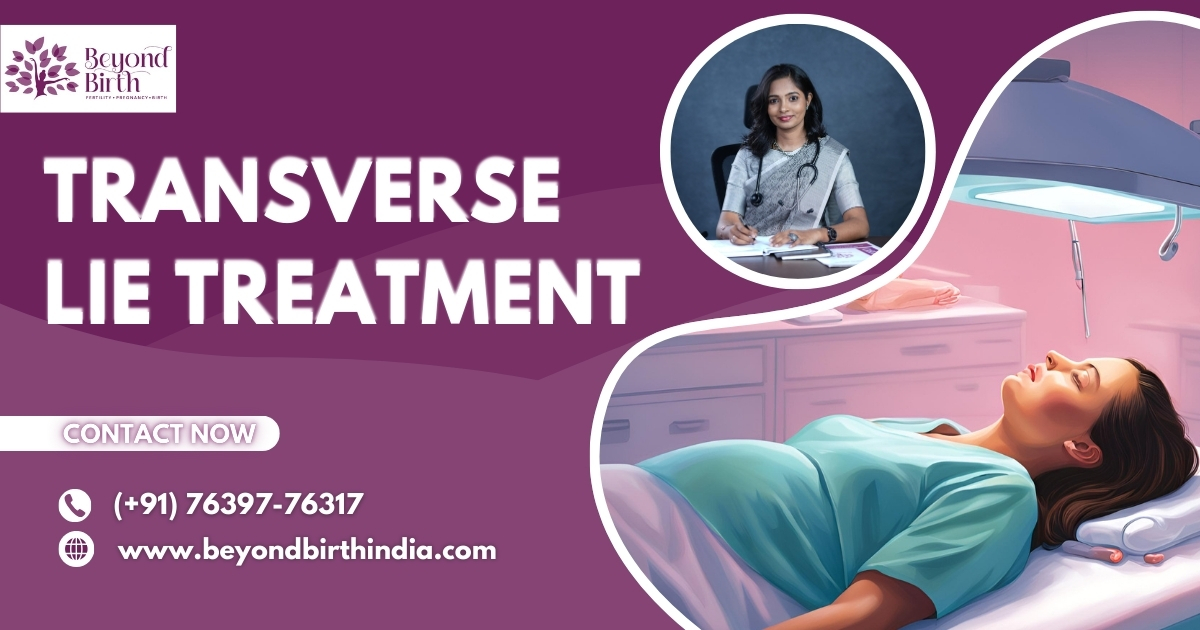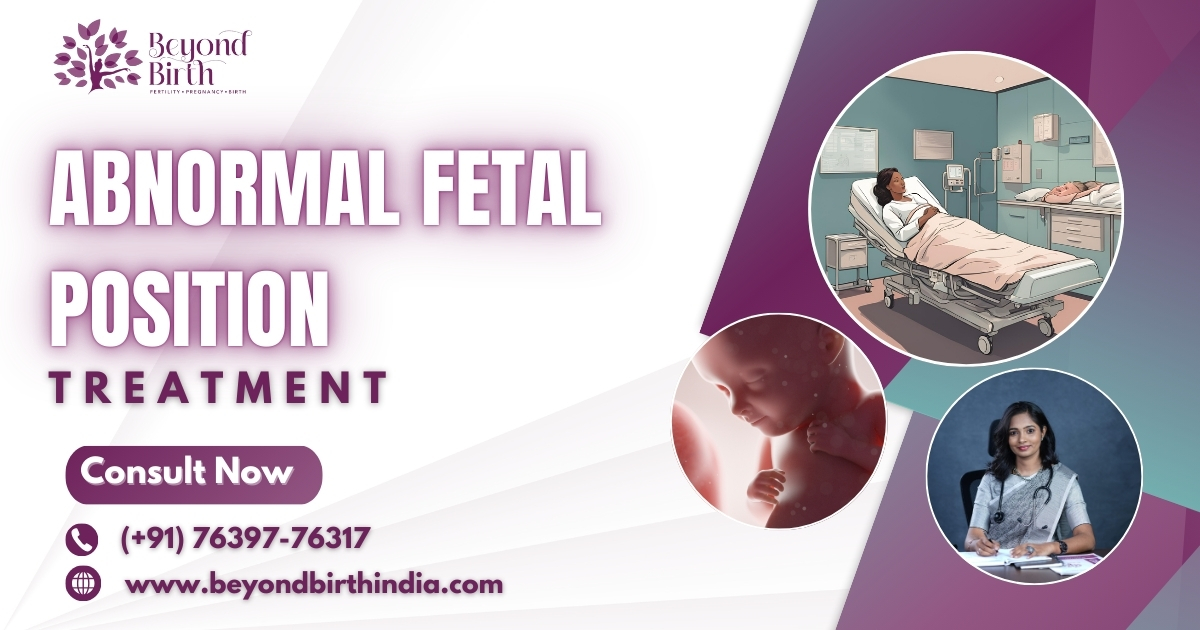Occipito-Posterior Position: Understanding Your Baby’s Unique Orientation
As you approach the exciting moment of meeting your little one, you may come across various terms related to your baby's position. One important term is occipito-posterior position (OP), which refers to your baby being head-down but facing your abdomen rather than your back. This position can lead to a more challenging labor experience compared to the ideal anterior position.
Why Does Occipito-Posterior Position Happen?
Several factors can contribute to your baby settling into the OP position:
Pelvic Shape: The shape and size of your pelvis can influence how your baby positions themselves. Certain pelvic shapes may predispose babies to rotate into an OP position.
Amniotic Fluid Levels: Abnormal levels of amniotic fluid—either too much or too little—can affect your baby's movement and positioning.
Previous Pregnancies: If you've previously had a baby in an OP position, there's a chance your current baby may follow suit.
How Is Occipito-Posterior Position Diagnosed?
Your healthcare provider will likely assess your baby's position during routine prenatal visits, especially as your due date approaches. They may perform a physical examination or use ultrasound for confirmation. Early detection allows for better planning for your delivery.
What to Expect During Delivery
Labor with a baby in OP position may come with unique challenges:
Longer Labor: Women with an OP baby may experience longer labor due to less effective contractions and increased back pain, often referred to as “back labor.”
Increased Pain: The baby's position can lead to heightened discomfort during contractions, particularly in the lower back.
Need for Position Changes: Your healthcare provider may suggest various positions during contractions to help your baby rotate into a more favorable anterior position.
Techniques to Manage Occipito-Posterior Position
If your baby is in the OP position, consider these techniques to encourage a smoother labor experience:
Positioning and Movement: Try different labor positions like hands-and-knees, lunging, or leaning forward during contractions to help your baby turn.
Chiropractic Care: Consulting a chiropractor experienced in prenatal care may help align your pelvis, encouraging your baby to move into the optimal position.
Spinning Babies Techniques: This approach involves specific techniques to create space in your pelvis and promote the baby’s movement. Consider seeking guidance from a certified practitioner.
When Is a C-Section Necessary?
Most women can deliver vaginally even with a baby in the OP position. However, if labor stalls or complications arise, a cesarean section (C-section) may be necessary. Your healthcare provider will discuss your options to ensure a safe delivery.
Your Journey with Beyond Birth
At Beyond Birth, we understand that every pregnancy has its unique challenges and surprises. Whether your baby is in the occipito-posterior position or navigating a more straightforward delivery, we’re here to provide the support, resources, and encouragement you need to feel confident and empowered. Birth is a remarkable journey, and we’re with you every step of the way.
Conclusion
While the occipito-posterior position may present challenges during labor, remember that you have options and support available. By understanding this condition, working closely with your healthcare provider, and utilizing various techniques, you can navigate this situation with confidence. Embrace the unpredictability of childbirth, trust your body, and know that at Beyond Birth, we’re here to support you as you welcome your little one into the world.
KNOW MORE : https://beyondbirthindia.com/o....ccipito-posterior-po
Brow Presentation Explained: Empowering Insights for Your Birth Journey
As you prepare for the arrival of your little one, you may encounter various terms that can feel overwhelming. One such term is brow presentation, which occurs when your baby’s head is tilted back, causing the forehead to present first in the birth canal. Unlike the ideal head-down position, this extended neck position is relatively rare, happening in about 1 in 100 births.
Why Does Brow Presentation Happen?
Several factors can lead to brow presentation:
Fetal Positioning: Babies can shift into different positions, and sometimes they end up in a brow presentation due to limited space or positioning in late pregnancy.
Maternal Anatomy: The shape of your pelvis or uterus can influence how your baby settles, potentially leading to brow presentation.
Previous Birth Experiences: If you’ve had a previous baby in brow presentation, the likelihood may increase for subsequent pregnancies.
How Is Brow Presentation Diagnosed?
Your healthcare provider can diagnose brow presentation through physical examinations or ultrasounds during prenatal visits. Early detection is essential for planning your delivery effectively.
What to Expect During Delivery
Labor with brow presentation may come with challenges:
Longer Labor: Since the baby’s head isn’t in the optimal position, labor may take longer, with the brow creating additional pressure on the cervix, slowing dilation.
Potential for C-Section: If the brow is too prominent or labor isn't progressing, a cesarean section (C-section) may be recommended to ensure a safe delivery.
Techniques to Manage Brow Presentation
If diagnosed with brow presentation, consider the following techniques:
Monitoring: Close monitoring of labor progression is vital. Your healthcare provider will assess whether the baby can turn into a more favorable position.
Position Changes: Changing positions during labor, like trying hands-and-knees, can sometimes encourage the baby to rotate.
Guided Techniques: Your provider may suggest exercises or interventions to assist with positioning and promote movement.
When Is a C-Section Necessary?
If brow presentation persists and complications arise during labor, a C-section may be required. While this may feel disappointing if you hoped for a vaginal delivery, remember that safety is the priority. Your healthcare provider will help you explore your options and prepare for a positive delivery experience.
Your Journey with Beyond Birth
At Beyond Birth, we recognize that each pregnancy is unique. Whether dealing with brow presentation or a more straightforward delivery, we’re here to provide the support, resources, and encouragement you need. Birth is a remarkable journey, and we’re with you every step of the way.
Conclusion
In conclusion, while brow presentation can present challenges during labor, it’s essential to know you have options and support. Understanding this condition, collaborating with your healthcare provider, and utilizing various techniques can help you navigate this unique situation. Embrace the unpredictability of childbirth, trust your body, and remember that at Beyond Birth, we’re here to support you as you welcome your little one into the world.
KNOW MORE : https://beyondbirthindia.com/b....row-presentation-tre
Transverse Lie Explained: What Expecting Parents Need to Know
As you approach the moment of meeting your little one, you may come across various terms that can feel overwhelming. One such term is transverse lie, which refers to your baby being positioned sideways in the uterus instead of head-down, the ideal position for delivery. This orientation makes vaginal delivery challenging, as the baby cannot navigate the birth canal properly.
Why Does Transverse Lie Happen?
Several factors can contribute to transverse lie:
Uterine Shape: An irregularly shaped uterus can hinder the baby's ability to settle head-down.
Amniotic Fluid Levels: Abnormal levels of amniotic fluid—either too much or too little—can restrict movement.
Multiple Pregnancies: Limited space in the uterus with twins or more can lead to unusual positioning.
Previous Pregnancies: If you had a previous baby in transverse lie, your current baby might also adopt this position.
How Is Transverse Lie Diagnosed?
Your healthcare provider will likely diagnose transverse lie during routine prenatal visits as you near your due date. They may perform a physical examination or use ultrasound to confirm the baby's position. Early detection allows for better preparation for delivery.
What to Expect During Delivery
Labor with a baby in transverse lie can present unique challenges:
Inability to Deliver Vaginally: A vaginal delivery may not be possible if the baby remains in this position as you approach labor.
C-Section Consideration: Typically, a cesarean section (C-section) is recommended to ensure a safe delivery for both you and your baby.
Techniques to Encourage Your Baby to Turn
If your baby is in a transverse lie position, you can try several techniques to encourage them to turn:
Position Changes: Changing positions—such as getting on your hands and knees or leaning forward—can help create space.
Spinning Babies Techniques: This approach includes exercises and stretches designed to encourage the baby to turn into a more favorable position.
Chiropractic Care: Prenatal chiropractic adjustments may help align your pelvis, creating room for rotation.
Moxibustion: This traditional technique involves burning a specific herb near your toes to stimulate movement. Consult your healthcare provider before trying this method.
When Is a C-Section Necessary?
In most cases of transverse lie, a C-section is recommended to ensure safety. While this may be disappointing if you hoped for a vaginal delivery, your health and your baby's well-being are the priorities. Your healthcare provider will discuss your options and help you prepare for a positive delivery experience.
Your Journey with Beyond Birth
At Beyond Birth, we understand that every pregnancy comes with its challenges and surprises. Whether facing a transverse lie position or a typical delivery, we're here to support you with the resources you need for a positive experience. Our goal is to empower you with knowledge and confidence as you embrace your journey.
Conclusion
In conclusion, while transverse lie can pose challenges during labor and delivery, you have options and support available. Many women successfully navigate this situation, and with the right guidance, you can too. Embrace the unpredictability of childbirth, trust your body, and know that at Beyond Birth, we're here to support you every step of the way as you welcome your little one.
Know more : https://beyondbirthindia.com/t....ransverse-lie-treatm
Facing the Unexpected: A Parent's Guide to Abnormal Fetal Positions
Pregnancy can be an exciting yet unpredictable journey. As your baby grows, their position in the womb becomes crucial for a smooth delivery. Ideally, babies settle into a head-down position, facing your back. However, some may adopt abnormal positions, which can complicate labor and delivery.
What Are Abnormal Fetal Positions?
Abnormal fetal positions occur when a baby isn’t head-down and facing the back as delivery approaches. Common types include:
Breech Position: The baby’s feet or buttocks come out first.
Occiput Posterior Position: The head is down, but the baby faces the abdomen, often causing back labor.
Transverse Lie: The baby lies sideways, making head-first delivery impossible.
Shoulder Presentation: The shoulder descends into the birth canal instead of the head.
Why Do Abnormal Fetal Positions Happen?
Several factors can contribute to abnormal fetal positions:
Uterine shape or size: Variations in uterine structure can influence positioning.
Amniotic fluid levels: Too much or too little fluid can restrict movement.
Multiple pregnancies: Tight spaces in twins or more can lead to positioning issues.
Maternal health conditions: Issues like uterine fibroids can affect positioning.
Previous pregnancies: A history of abnormal positions can increase the likelihood in subsequent pregnancies.
How Are Abnormal Fetal Positions Diagnosed?
Your healthcare provider will typically assess your baby’s position during prenatal check-ups, using abdominal exams or ultrasounds. If your baby is in an abnormal position, there are still safe delivery options available.
Implications for Delivery
The baby's position can significantly impact labor and delivery. Here’s what to expect:
Breech Position: Many breech babies rotate on their own before labor. If not, your provider may attempt an external cephalic version (ECV) to encourage turning. If that fails, a C-section may be recommended for safety.
Occiput Posterior Position: While labor may take longer and involve more discomfort, vaginal delivery is possible. Positions like hands and knees can help the baby rotate.
Transverse Lie and Shoulder Presentation: These positions typically require a C-section as vaginal delivery is unsafe.
Techniques to Encourage Movement
If your baby is in an abnormal position, try these techniques:
Pelvic Tilts and Exercises: Movements like pelvic tilts or cat-cow stretches can create space for the baby.
Spinning Babies Techniques: This approach focuses on movement and positioning to facilitate optimal positioning.
Chiropractic Care: The Webster technique can help align the pelvis for better baby positioning.
Moxibustion and Acupuncture: These traditional practices may stimulate energy flow to encourage the baby to turn.
When Might a C-Section Be Necessary?
Although many women can deliver vaginally, certain cases (like transverse lie or shoulder presentation) may necessitate a C-section to ensure safety. Your healthcare provider will discuss the best options for you.
Your Journey with Beyond Birth
At Beyond Birth, we recognize that every pregnancy is unique. We are committed to supporting you through all aspects, whether dealing with an abnormal fetal position or navigating a straightforward delivery. Our goal is to empower you with resources and care throughout your journey.
Conclusion
While abnormal fetal positions can pose challenges during labor, they don’t diminish the beauty of your birthing experience. Understanding these positions and their implications can help you feel more prepared. With the right support and techniques, you can navigate this situation with confidence. At Beyond Birth, we are dedicated to empowering you throughout your pregnancy and birthing journey.
Know more : https://beyondbirthindia.com/a....bnormal-fetal-positi
Naturopathy Treatment for Psoriasis in Chennai: Beyond Birth India
Psoriasis is a chronic autoimmune skin condition that affects millions of people worldwide. Characterized by red, scaly patches on the skin, it can cause physical discomfort and emotional distress. Traditional treatments often focus on managing symptoms through medication, but at Beyond Birth India in Chennai, we offer a holistic and natural approach to managing psoriasis through naturopathy. Our clinic is dedicated to helping patients find long-term relief by addressing the root causes of their condition and supporting overall well-being.
Understanding Psoriasis
Psoriasis occurs when the immune system mistakenly attacks healthy skin cells, causing them to multiply rapidly. This leads to the buildup of cells on the skin’s surface, forming scales and red patches that are often itchy and inflamed. Although the exact cause of psoriasis is still unknown, it is believed to be linked to both genetic and environmental factors. Stress, infections, certain medications, and lifestyle choices can trigger or exacerbate the condition.
The most common types of psoriasis include:
Plaque Psoriasis: The most common form, characterized by raised, red patches covered with a silvery white buildup of dead skin cells.
Guttate Psoriasis: Appears as small, dot-like lesions and is usually triggered by bacterial infections such as strep throat.
Inverse Psoriasis: Occurs in skin folds like the groin, underarms, and under the breasts, where it appears as smooth, red patches.
Pustular Psoriasis: A more severe form characterized by white pustules (blisters of non-infectious pus) surrounded by red skin.
Erythrodermic Psoriasis: A rare and severe form that causes widespread redness, scaling, and peeling of the skin.
Psoriasis can affect different parts of the body, including the scalp, face, hands, feet, and nails. While it is not contagious, it can significantly impact a person’s quality of life.
Symptoms of Psoriasis
The symptoms of psoriasis can vary depending on the type and severity of the condition. Common symptoms include:
Red patches of skin covered with thick, silvery scales
Dry, cracked skin that may bleed
Itching, burning, or soreness
Thickened or ridged nails
Swollen and stiff joints (in cases of psoriatic arthritis)
Psoriasis is a chronic condition that tends to come and go in cycles, with periods of remission followed by flare-ups. Managing these flare-ups requires more than just treating the visible symptoms—it involves understanding and addressing the underlying triggers.
Naturopathy: A Holistic Approach to Psoriasis Treatment
At Beyond Birth India in Chennai, we believe that naturopathy offers a gentle yet effective way to manage psoriasis. Naturopathy focuses on treating the whole person rather than just the symptoms. By addressing the root causes of psoriasis, we aim to promote long-term healing and improve overall health.
Naturopathic treatment for psoriasis is based on several core principles:
Addressing the Root Cause: Rather than simply alleviating symptoms, naturopathy looks at the underlying factors that may contribute to psoriasis, such as diet, lifestyle, stress, and environmental triggers.
Supporting the Body’s Natural Healing Processes: Naturopathy emphasizes the body’s ability to heal itself when given the right tools. This includes a balanced diet, detoxification, stress management, and immune system support.
Individualized Treatment Plans: Each person’s experience with psoriasis is unique. At Beyond Birth India, we create personalized treatment plans tailored to each patient’s specific needs, ensuring a comprehensive approach to healing.
https://beyondbirthindia.com/n....aturopathy-treatment





